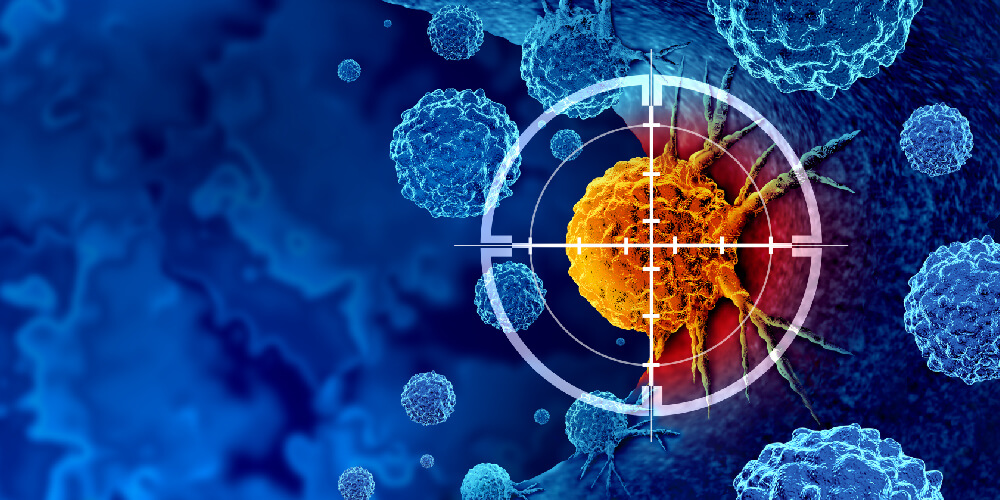<< Back to MOTIFvations Blog Home Page
The Search for a Therapeutic Chink in Inhibitor-resistant NRAS Mutant Tumor’s Armour

June 9, 2025
Table of Contents:
Introduction: MAPK Inhibitor-Resistant NRAS Mutant Melanomas: A Significant Therapeutic Problem
Cases of cutaneous melanomas often arise due to the presence of oncogenic mutations in NRAS (Neuroblastoma RAS viral oncogene homolog) (Hayward et al.), which drive tumor growth through mitogen-activated protein kinase (MAPK) signaling. Unfortunately, approaches based on inhibiting the MAPK pathway remain therapeutically inefficacious in NRAS mutant melanoma (Dummer et al. and Sullivan et al.), and RAS mutant tumors generally remain refractory to currently available targeted therapies. Oncogenic NRAS controls cell metabolism through the mechanistic target of rapamycin protein complex 1 (mTORC1), a critical RAS effector (Düvel et al.) that integrates upstream signals that include those emanating from the MAPK pathway (Corcoran et al. and Magnuson et al.). This all suggests that factors involved in mTORC1 signaling represent a potential area of vulnerability and provide a new means of targeting NRAS mutant tumors.
Given the clinical unmet need for novel cutaneous melanoma treatments, researchers from the laboratory of Jessie Villanueva (Wistar Institute) sought to identify novel therapeutic strategies for MAPK inhibitor-resistant NRAS mutant cancers (Lipchick and Guterres et al.). Now, a new Science Translational Medicine study from the Villanueva lab describes a potential “chink” in melanoma´s armor by revealing how targeting the ribosomal protein S6 kinase 2 (S6K2)/peroxisome proliferator-activated receptor α (PPARα) pathway downstream of MAPK signaling can induce cell death in MAPK inhibitor-resistant NRAS mutant melanoma cells and inhibit the growth of MAPK inhibitor-resistant tumors. Overall, the identification of this therapeutic vulnerability may support the design of future strategies to safely and effectively combat MAPK inhibitor-resistant NRAS mutant melanoma.
Discovery of a New Means to Target MAPK inhibitor-resistant NRAS Mutant Melanomas
Lipchick and Guterres et al. identified S6K2 as a potentially targetable therapeutic vulnerability in MAPK inhibitor-resistant NRAS mutant tumors by comparing the impact of MAPK inhibition in MAPK inhibitor-sensitive and MAPK inhibitor-resistant NRAS mutant melanoma cells. S6K1 and S6K2 (Sridharan and Basu (a)) represent key effectors of the mTORC1 pathway and play critical roles in gene transcription, protein translation, cellular metabolism, and cell survival (Magnuson et al., Sridharan and Basu (a), and Pardo and Seckl); furthermore, numerous studies have linked them to tumorigenesis (Chen et al. and Sridharan and Basu (b)).
In vitro analyses demonstrated how S6K2 knockdown perturbed lipid metabolism, enhanced fatty acid unsaturation, and triggered lethal lipid peroxidation in MAPK inhibitor-resistant NRAS mutant melanoma cells; furthermore, they discovered that S6K2 depletion induced an increase in endoplasmic reticulum stress and PPARα activation, which selectively triggered cell death. Moving in vivo, the team revealed how a combination treatment strategy comprising a PPARα agonist (fenofibrate) and polyunsaturated fatty acid (docosahexaenoic acid) supplementation phenocopied the effects of S6K2 knockdown and reduced MAPK inhibitor-resistant tumor growth in patient-derived xenografts and immunocompetent murine melanoma models.
S6K2 Inhibition: A Step Forward in the Treatment of MAPK inhibitor-resistant NRAS mutant Melanomas?
Does the identification of this chink in melanoma´s armor represent an encouraging step forward in the treatment of this aggressive tumor type that lacks safe and effective treatments? The data identify S6K2 and the S6K2 effector subnetwork as promising new therapeutic targets for the safe and effective treatment of MAPK inhibitor-resistant NRAS mutant melanoma, and the next steps in this research will aim to overcome some of the limitations noted by the authors. Said limitations include a need to identify the upstream regulators of S6K2, understand the potentially pleiotropic immunomodulatory effects of fenofibrate/docosahexaenoic acid treatment, and develop selective small molecule inhibitors of S6K2.
Active Motif can help in the battle against cancer with a range of RAS GTPase-related products, including both recombinant RAS antibodies and easy-to-use ELISAs that detect active RAS in samples (the Ras GTPase Chemi ELISA Kit and the KRAS In-well Lysis ELISA Kit).
For more on the identification of a chink in melanoma´s armor, see Science Translational Medicine, February 2025.
About the author

Stuart P. Atkinson, Ph.D.
Stuart was born and grew up in the idyllic town of Lanark (Scotland). He later studied biochemistry at the University of Strathclyde in Glasgow (Scotland) before gaining his Ph.D. in medical oncology; his thesis described the epigenetic regulation of the telomerase gene promoters in cancer cells. Following Post-doctoral stays in Newcastle (England) and Valencia (Spain) where his varied research aims included the exploration of epigenetics in embryonic and induced pluripotent stem cells, Stuart moved into project management and scientific writing/editing where his current interests include polymer chemistry, cancer research, regenerative medicine, and epigenetics. While not glued to his laptop, Stuart enjoys exploring the Spanish mountains and coastlines (and everywhere in between) and the food and drink that it provides!
Contact Stuart on X with any questions
Related Articles
Keeping Up to Date with KRAS-driven Cancer
July 14, 2023
Oncogenic mutations in the KRAS proto-oncogene lead to the generation of proteins that drive the development of lung, colorectal, and pancreatic cancers. Patients with these types of KRAS-driven tumors have historically faced significant treatment challenges. The development of new strategies to target KRAS driven cancer has the potential to save thousands of lives each year. In this blog we discuss some of the exciting studies that have propelled the KRAS-centered cancer research field forward in recent months.
Read More
Strategies for KRAS Research and Drug Discovery
March 8, 2023
RAS is one of the most common oncogenes, responsible for 20-30% of all human cancers, with KRAS being responsible for most of these. Current research has mostly focused on targeting KRAS mutants, but it’s only been in the last decade that we’ve seen development of methods to directly inhibit mutant KRAS. With new insight into mechanisms behind KRAS activation there is an ever-expanding pipeline of potential drugs which may change the way these dangerous cancers are treated. Here we provide a look at the history of RAS family proteins in the context of mutations and potentially targets to mitigate their action.
Read More
<< Back to MOTIFvations Blog Home Page








